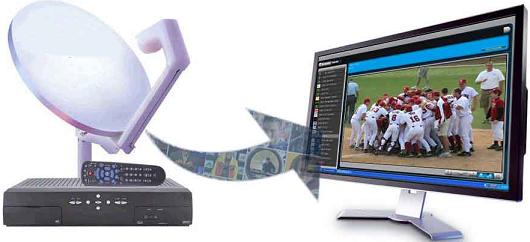<p>Life is getting harder and longer for all of us, so when it comes to our entertainment it&#8217;s no wonder we want access to the very best content to help soothe our aching souls and tired minds.</p>
<p>But should we really have to pay through the roof for it? Although the major digital TV providers would have you believe you wouldn&#8217;t be able to live without them, the fact of the matter is that satellite installation isn&#8217;t rocket science and if you&#8217;re willing to do a little bit of work, you can enjoy everything that the vast world of digital satellite television has to offer without burning a massive hole in your wallet with exorbitant &#8216;installation fees&#8217;.</p>
<p>With a digital satellite installed and a set-top box receiver under your TV, you can have access to potentially hundreds of channels worth of entertainment with crystal clear audio and high definition video.</p>
<p style="text-align: center"><img class="aligncenter wp-image-5631" alt="Install Your Own Satellite TV" src="https://medusamagazine.com/wp-content/uploads/2013/08/Install-Your-Own-Satellite-TV.jpg" width="550" height="262" /></p>
<h2>Making Your Choice</h2>
<p>There are numerous digital satellite TV providers out there with the most prominent obviously being Sky TV. In the UK the other options are admittedly limited, Virgin is the other major digital TV service but that uses fibre optic cables instead of satellite. However if you are (for example) an expatriate living abroad, it is possible for you to angle your dish so that you can pick up international satellite television.</p>
<p>For example, if you were a UK citizen living in France or Spain, as long as you had a Sky subscription then in theory you should still be able to pick up the same service you receive at home in your new continental abode.</p>
<h2>Mounting the Dish</h2>
<p>Before you even begin to think about mounting your dish, you&#8217;re going to want to consider its location. It&#8217;s important first and foremost to select a location on your house where there are no nearby trees, bushes or tall buildings that could potentially block the satellite and leave you with No digital TV signal. Some users might be concerned with how the dish will look on their houses aesthetically, but a &#8216;pretty placement&#8217; will not equal optimum performance.</p>
<p>It&#8217;s important to make sure that the dish is facing south as this is where you&#8217;ll receive the clearest signal. If you live in a flat or shared housing or if your landlord has not given you permission to install a permanent satellite dish, it should be possible to set up a dish on your balcony using a portable stand, of course this isn&#8217;t an ideal solution but it can be rather effective.</p>
<p>Once you&#8217;ve selected your location it should be relatively straight-forward to mount your dish. Simply follow the instructions included, making sure you have all of the recommended tools to hand.</p>
<p>When the dish has been mounted, feed the dishes coaxial cable into your receiver, turn it on and tell a companion to also turn on the TV. Ask your companion to monitor the signal strength (there should be a menu setting on your TV) as you move the dish and tell them to let you know when it&#8217;s at its peak. When you have the strongest possible signal, leave the dish, run the coaxial cable through the walls down into your living room and reconnect to your box.</p>
<h2>Setting up the TV</h2>
<p>Use your coaxial cable to connect your satellite dish to your digital TV receiver (a set top box that will most likely also function as a DVR recorder) and then connect your receiver to your TV either with a SCART connector or HDMI (if you&#8217;re television and receiver are both HD compatible). Make sure that if your box requires an internet connection that it&#8217;s plugged into either a telephone wall socket or a WiFi router and then call your satellite provider.</p>
<p>They should be able to activate your system remotely so the only step left is for you to sit back with your remote and collapse into a world on unlimited entertainment possibilities!</p>
<h2>Troubleshooting</h2>
<p>If you&#8217;re receiving no digital TV signal then it might be wise to first check that your coaxial cable is properly connected. This is by far the easiest problem to fix so it would be far more convenient to check this first before you start getting the ladder out and poking around with your dish. If this doesn&#8217;t work then try re-angling your dish as it could have been knocked out of place by a passing bird or perhaps a particularly strong gust of wind.</p>
<p>As you can see, installing your own satellite television is something that most people wouldn&#8217;t even think of doing but it really only amounts to an afternoons worth of work and the savings you&#8217;ll make will be spectacular. So grab your toolbox and your wallet, you&#8217;ve got a lot of work to do!</p>
<p>Jann Webb is a freelance copywriter from the UK who performed her first satellite installation just last year. No digital TV signal she&#8217;s ever experienced has been as rich and attractive and she saved so much money installing her own satellite she was able to finally buy herself a new laptop!</p>

Install Your Own Satellite TV And Enjoy Quality Digital Television Without Breaking The Bank
